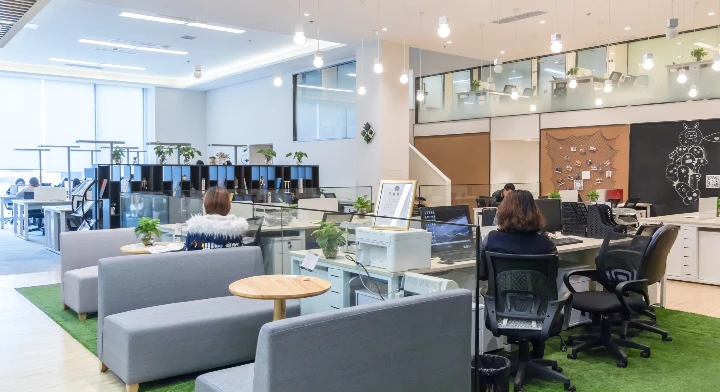
- Afrikaans
- Arabic
- Belarusian
- Bengali
- Czech
- Danish
- Dutch
- English
- Esperanto
- Estonian
- Finnish
- French
- German
- Greek
- Hindi
- Hungarian
- Icelandic
- Indonesian
- irish
- Italian
- Japanese
- kazakh
- Rwandese
- Korean
- Kyrgyz
- Lao
- Latin
- Latvian
- Malay
- Mongolian
- Myanmar
- Norwegian
- Persian
- Polish
- Portuguese
- Romanian
- Russian
- Serbian
- Spanish
- Swedish
- Tagalog
- Tajik
- Thai
- Turkish
- Turkmen
- Ukrainian
- Urdu
- Uighur
- Uzbek
- Vietnamese
Tips for Maintaining a Healthy and Beautiful Putting Green Lawn
Nov . 09, 2024 07:57 Back to list
The Importance of Putting Green Grass in Golf
Golf is a sport that is deeply entrenched in tradition and precision, where every aspect of the game contributes to the overall experience. Among these elements, the putting green holds a particularly significant role, not just as a space for players to practice their putting skills, but also as a critical component of golf course design. At the heart of every putting green lies the grass—specifically chosen and meticulously maintained to provide golfers with an optimal playing surface.
What Makes the Perfect Putting Green Grass?
The type of grass used on putting greens can greatly influence the outcome of a game. There are several grass varieties that are commonly used, including Bentgrass, Bermuda grass, and Poa Annua. Each type of grass has its unique characteristics that impact how the ball rolls, its speed, and the overall feel for the golfer.
Bentgrass is perhaps the most popular choice for golf courses in cooler climates. This grass type provides a smooth, dense surface, making the ball roll true. Its fine texture allows for greater control, which is essential for putting. However, Bentgrass requires significant maintenance, including regular aeration and topdressing, to keep it in optimal condition.
On the other hand, Bermuda grass thrives in warmer climates and is often favored for its durability. It can withstand heavy foot traffic and has a high recovery rate, making it ideal for putting greens in areas with a lot of play. Bermuda grass also offers a good speed and can be managed to provide a truer roll, though some golfers feel it does not perform as well in cooler temperatures.
Poa Annua, a more invasive species, can be found on many courses, particularly those in transitional climates. While it can provide a smooth putting surface, it is often less reliable than Bentgrass or Bermuda. Poa Annua tends to grow unevenly and can lead to inconsistent playing conditions, particularly in the spring and fall when temperatures fluctuate.
Maintenance The Key to Perfection
Maintaining putting green grass is an ongoing challenge for golf course superintendents. To provide golfers with the best possible experience, a comprehensive maintenance program is essential. This includes regular mowing, watering, aerification, and pest control.
putting green grass

Mowing is perhaps the most critical aspect of maintenance. Greens are typically mowed at a very low height, often between 0.1 and 0.25 inches. This requires specialized equipment and experienced staff to ensure that the grass is not damaged, and the surface remains smooth.
Watering is also vital, as greens must maintain appropriate moisture levels to prevent stress on the grass. However, overwatering can lead to disease and uneven surfaces. Golf course superintendents must find the right balance, often relying on weather patterns and soil moisture testing to guide their practices.
Aerification is another critical process, which involves perforating the soil with holes to allow air, water, and nutrients to penetrate the grass roots. This helps alleviate compaction, promotes healthy root growth, and ultimately ensures a vibrant and resilient putting surface.
Lastly, pest control is essential. Common threats include fungal diseases and insect infestations, which can quickly compromise the quality of the putting green. Integrated Pest Management (IPM) strategies are often used, balancing chemical treatments with natural pest control methods to minimize damage while protecting the environment.
The Role of Technology
In recent years, advancements in technology have also transformed how golf courses maintain their putting greens. Drones and satellite imaging can provide real-time data on grass health and moisture levels, allowing superintendents to make informed decisions regarding irrigation and fertilizer use.
Moreover, innovations in grass genetics have led to the development of hybrid grass varieties that offer the best of both worlds—combining the resilience of Bermuda with the smoothness of Bentgrass. These hybrids can be more adaptable to changing weather conditions and foot traffic, providing a sustainable solution for golf courses facing increasing demands from players.
Conclusion
In conclusion, the putting green is a critical aspect of the golf experience, with the type and maintenance of the grass playing a pivotal role in performance. As technology continues to evolve, the future of putting green maintenance looks promising. Golfers can look forward to even better playing conditions, making their time on the course even more enjoyable. The meticulous care of putting green grass is not just about aesthetics; it’s about honoring the game of golf and providing an unparalleled experience for players at every level.
-
The Benefits of Artificial Turf for Indoors
NewsJul.15,2025
-
How Artificial Grass Suppliers Ensure Quality Products
NewsJul.15,2025
-
Artificial Grass and Pets: A Space for Relaxation
NewsJul.08,2025
-
Balcony & Outdoor Decoration with Artificial Grass
NewsJul.08,2025
-
Best Indoor Artificial Grass for Home
NewsJul.07,2025
-
Best Pet Turf for Dogs: Safe & Durable Artificial Grass Options
NewsJul.07,2025
Products categories









